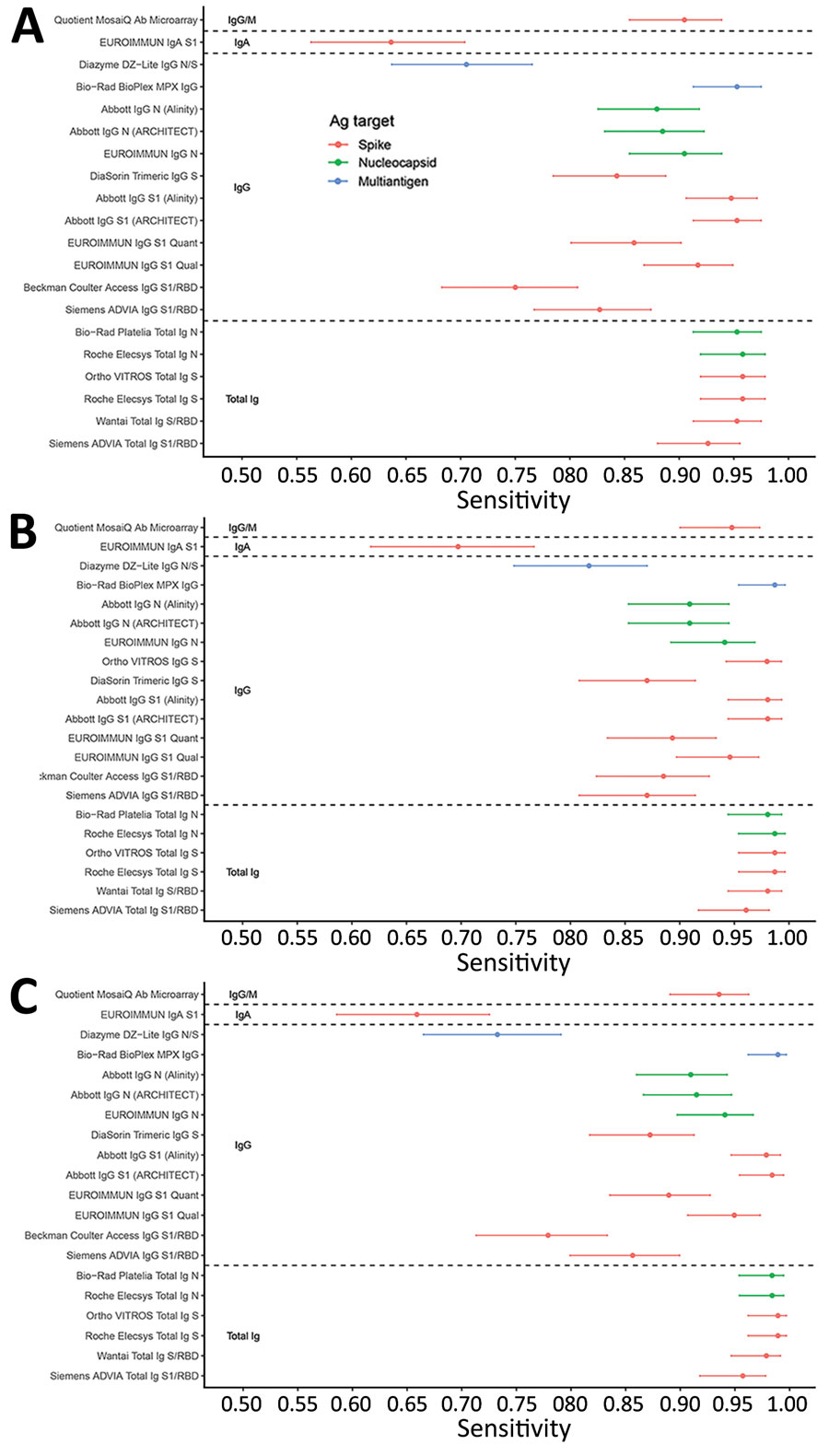Evaluation of Commercially Available High-Throughput SARS-CoV-2 Serologic Assays for Serosurveillance and Related Applications
Mars Stone
1
, Eduard Grebe
1, Hasan Sulaeman, Clara Di Germanio, Honey Dave, Kathleen Kelly, Brad J. Biggerstaff, Bridgit O. Crews, Nam Tran, Keith R. Jerome, Thomas N. Denny, Boris Hogema, Mark Destree, Jefferson M. Jones, Natalie Thornburg, Graham Simmons, Mel Krajden, Steve Kleinman, Larry J. Dumont, and Michael P. Busch
Author affiliations: Vitalant Research Institute, San Francisco, California, USA (M. Stone, E. Grebe, H. Sulaeman, C. Di Germanio, H. Dave, K. Kelly, G. Simmons, L.J. Dumont, M.P. Busch); University of California–San Francisco, San Francisco (M. Stone, E. Grebe, G. Simmons, M.P. Busch); South African Centre for Epidemiological Modelling and Analysis, Stellenbosch University, Stellenbosch, South Africa (E. Grebe); Centers for Disease Control and Prevention, Fort Collins, Colorado, USA (B.J. Biggerstaff); University of California Irvine Medical Center, Orange, California, USA (B.O. Crews); University of California–Davis, Davis, California, USA (N. Tran); Fred Hutchinson Cancer Research Center, University of Washington, Seattle, Washington, USA (K.R. Jerome); Duke Human Vaccine Institute, Duke University, Durham, North Carolina, USA (T.N. Denny); Sanquin Research, Amsterdam, the Netherlands (B. Hogema); BloodWorks NorthWest, Seattle (M. Destree); Centers for Disease Control and Prevention, Atlanta, Georgia, USA (J.M. Jones, N. Thornburg); British Columbia Centre for Disease Control, Vancouver, British Columbia, Canada (M. Krajden); University of British Columbia, Vancouver (S. Kleinman); University of Colorado School of Medicine, Denver, Colorado, USA (L.J. Dumont)
Main Article
Figure 1

Figure 1. Sensitivity of severe acute respiratory syndrome coronavirus 2 serologic assays (descriptions in Table 1) using 3 definitions of a true positive in study of commercially available high-throughput assays for serosurveillance. A) Positivity defined by qualification as CCP, coronavirus disease convalescent plasma donor (excluding purposely selected serosilent specimens). B) Positivity defined by neutralizing activity measured by Broad plaque reduction neutralization test. C) Positivity defined by operational standard (>3 binding antibody assays reactive). Dots indicate point estimates, and bars indicate Wilson score 95% CIs. Ortho VITROS IgG S assay is included only in panel B because the assay required use of serum for testing; thus, only specimens with available serum and neutralizing data were tested. Ab, antibody; Ag, antigen; N, nucleocapsid; RBD, receptor binding domain; PRNT, plaque reduction neutralization test; S, spike protein.
Main Article
Page created: January 12, 2022
Page updated: February 21, 2022
Page reviewed: February 21, 2022
The conclusions, findings, and opinions expressed by authors contributing to this journal do not necessarily reflect the official position of the U.S. Department of Health and Human Services, the Public Health Service, the Centers for Disease Control and Prevention, or the authors' affiliated institutions. Use of trade names is for identification only and does not imply endorsement by any of the groups named above.
